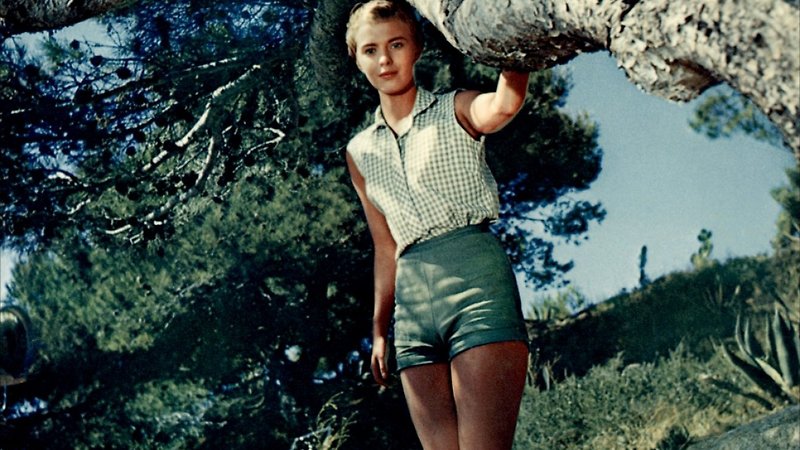Beautiful CinemaScope Technicolor restoration of Otto Preminger’s 1958 adaptation of Françoise Sagan’s scandalous bestseller starring David Niven, Deborah Kerr, Breathless star Jean Seberg – and the French Riviera.

This plangent, romantic tale about a spoiled rich girl (Seberg, utter perfection)… is always worth seeing on the big screen.
Screened as part of NZIFF 2012
Bonjour Tristesse 1958
Recently restored to its first ravishing Technicolor incarnation and now transferred to DCP, Otto Preminger’s 1958 adaptation of Françoise Sagan’s scandalous bestseller has remarkable affinities with some notable European films of the 60s. David Niven plays a jaded playboy father and Jean Seberg is the unruly teenage daughter determined to keep him single. The picture of Riviera jet-set frivolity foreshadows Fellini and Antonioni in its mix of perversity and chic styling.
The disruptive vitality of the young woman at its centre still feels fresh. The French New Wave critics adored it and Jean-Luc Godard made Seberg his Breathless star. Deborah Kerr plays the unfortunate woman who crashes the father/daughter romance. The rare CinemaScope film to put the giant screen format to the service of personal drama, it really shouldn’t be missed on this even rarer giant screen outing.
“A narrative flashing back from a glassy black-and-white Paris to a glittering Technicolor Riviera divides the world between serious, sober people and silly, inconsequential ones, and watches the wreckage that results when the two collide. Saul Bass’ graphics set the mournful mood in the opening credits, while the costumes – by Givenchy, Cartier, and Hermès – establish the milieu.” — Nick Pinkerton, Village Voice
“With her pixie hairdo and tomboy sturdiness, Jean Seberg was the antithesis of a lacquered Hollywood starlet… And though Seberg was clearly a novice compared to Niven and Kerr, it’s precisely her untrained naturalness that makes her performance so compelling.” — Tim Purtell, Entertainment Weekly